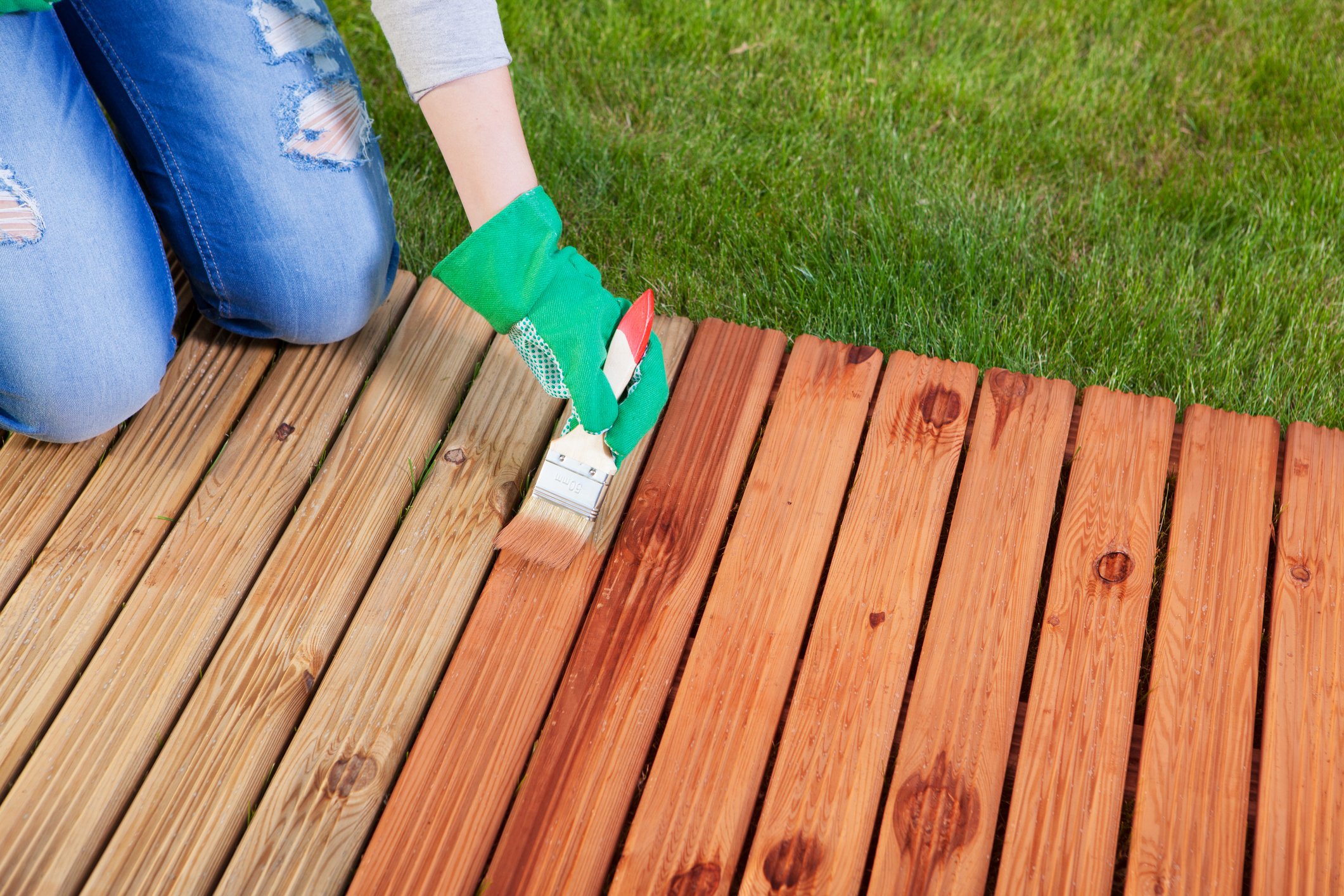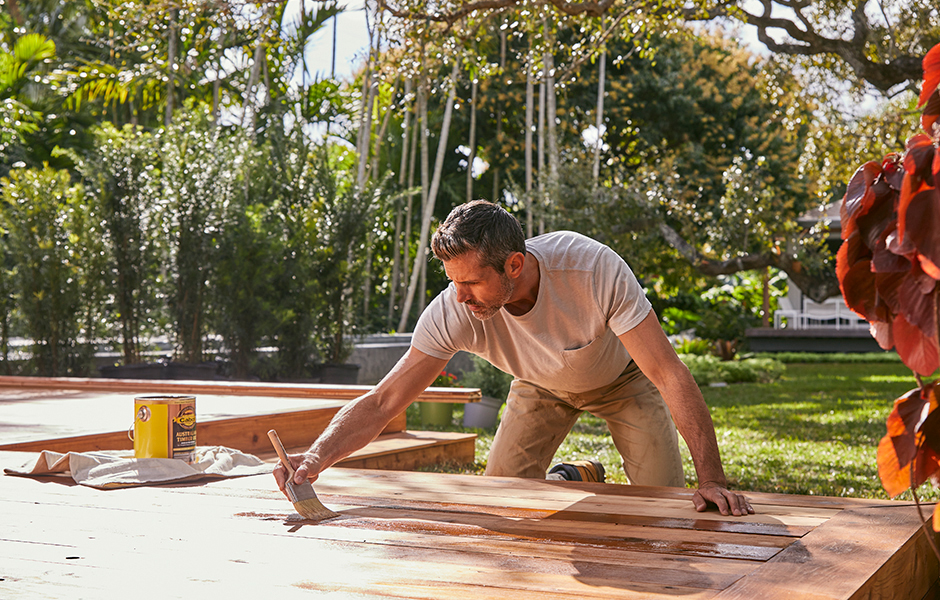A Comprehensive Guide to Different Sorts Of Deck Staining Techniques for Ultimate Security and Aesthetics
In the world of deck maintenance, the art of tarnishing stands as a crucial step towards both maintaining the stability of your outdoor room and improving its aesthetic charm. As we navigate via the complex world of deck discoloration techniques, one starts to appreciate the nuanced approaches that can make all the distinction between a sub-par surface and a perfect one.
Comprehending Various Types of Stains
Numerous kinds of discolorations are frequently used in the procedure of deck staining to accomplish various aesthetic and safety impacts. Clear stains are ideal for showcasing the natural grain of the timber while offering marginal protection versus UV rays and moisture. On the other hand, semi-transparent discolorations provide an equilibrium between shade enhancement and security, permitting some wood grain to reveal via. For a much more nontransparent finish that offers optimum protection against the aspects, strong stains are the favored selection. These stains are available in a variety of shades and effectively conceal the timber grain.
Additionally, there are likewise specialized discolorations such as sealants and printer toners. Toners include a hint of color to the wood while offering very little security, making them appropriate for more recent decks with much less wear. Sealants, on the various other hand, deal defense versus dampness and UV rays without adding color, making them a popular choice for decks that already boast a desirable hue. Comprehending the attributes and advantages of each sort of tarnish is critical for attaining the wanted appearance and resilience for your deck.
Selecting the Right Spot Color
When considering the visual appeals of your deck staining task, the option of stain shade plays a critical duty in improving the protective top qualities of the chosen stain kind (Stain Deck). The shade you choose can substantially affect the total appearance of your deck, as well as its capacity to stand up to the elements with time
When choosing a stain shade, it's vital to consider the existing shade scheme of your home's outside. Harmonizing the deck tarnish with the overall visual of your home can create a natural and aesthetically attractive outdoor area. Additionally, the shade of your deck tarnish can influence the temperature level of the deck surface; darker colors often tend to absorb even more warmth, while lighter colors mirror sunlight and stay cooler.
In addition, the kind of timber you are tarnishing will likewise influence how the discolor shade appears. Different timber varieties can communicate with the discolor in numerous ways, potentially changing the last color. It's recommended to examine the stain on a small, unnoticeable location of the deck to ensure the color ends up as preferred prior to waging the entire project.
Preparing Your Deck for Staining
To guarantee a lasting and successful deck staining task, thorough prep you can try these out work of the deck surface area is essential. Begin by cleansing the deck completely to eliminate dirt, grime, mildew, and any kind Visit Website of old complete or stain.
Inspect the deck for any kind of harmed or rotten boards that require to be replaced. Hammer down any sticking out nails and sand any kind of rough areas to ensure a smooth surface area for discoloration. Look for any loosened railings or steps that might need tightening or fixing.
Once the deck is tidy, dry, and in excellent repair work, take into consideration applying a timber brightener to bring back the deck's all-natural color and open the wood pores for far better stain infiltration. Protect any type of nearby plants, furniture, or surface areas with plastic sheeting before continuing with the staining process. Correct preparation is crucial to achieving a professional-looking surface and making best use of the durability of your deck tarnish.
Applying Spot With Numerous Techniques
For a professional and flawless surface, the approach of applying stain plays a vital role in enhancing the appearance and resilience of your deck. There are numerous methods you can make use of to guarantee an effective application of stain.
It is ideal for intricate areas and reaching in between deck boards. Back-brushing after rolling is advised to also out the discolor and work it into the wood for better infiltration.
Splashing is one more popular strategy, providing rate and simplicity of application, especially for huge deck areas. Whichever strategy you select, ensuring appropriate preparation and adhering to producer standards will aid achieve a attractive and resilient stain surface on your deck.

Preserving and Re-staining Your Deck
Appropriate maintenance and timely re-staining are essential for maintaining the elegance and durability of your deck. Routine maintenance jobs include sweeping particles, cleansing with a deck cleaner, and evaluating for any signs of wear or damages. Attending more info here to problems quickly can avoid more substantial issues in the future. When it concerns re-staining your deck, the regularity relies on various factors such as the kind of stain made use of, the environment in your area, and just how much deterioration your deck experiences. Generally, it is suggested to re-stain your deck every 2-4 years to maintain its defense and looks.
Prior to re-staining, make certain the deck is clean, dry, and totally free of any type of previous discolor residue. Select a high-grade tarnish that matches your deck's product and gives the desired level of protection.
Conclusion
Finally, comprehending the different kinds of deck stains, choosing the best color, correctly preparing the deck, applying stain with various strategies, and keeping and re-staining the deck are crucial actions for best defense and appearances. By adhering to these actions, you can guarantee that your deck stays in top condition for several years ahead.
In addition, the color of your deck stain can affect the temperature level of the deck surface; darker colors often tend to soak up more heat, while lighter shades show sunlight and remain cooler.
It's a good idea to check the discolor on a small, inconspicuous location of the deck to ensure the color turns out as desired before proceeding with the entire task.
